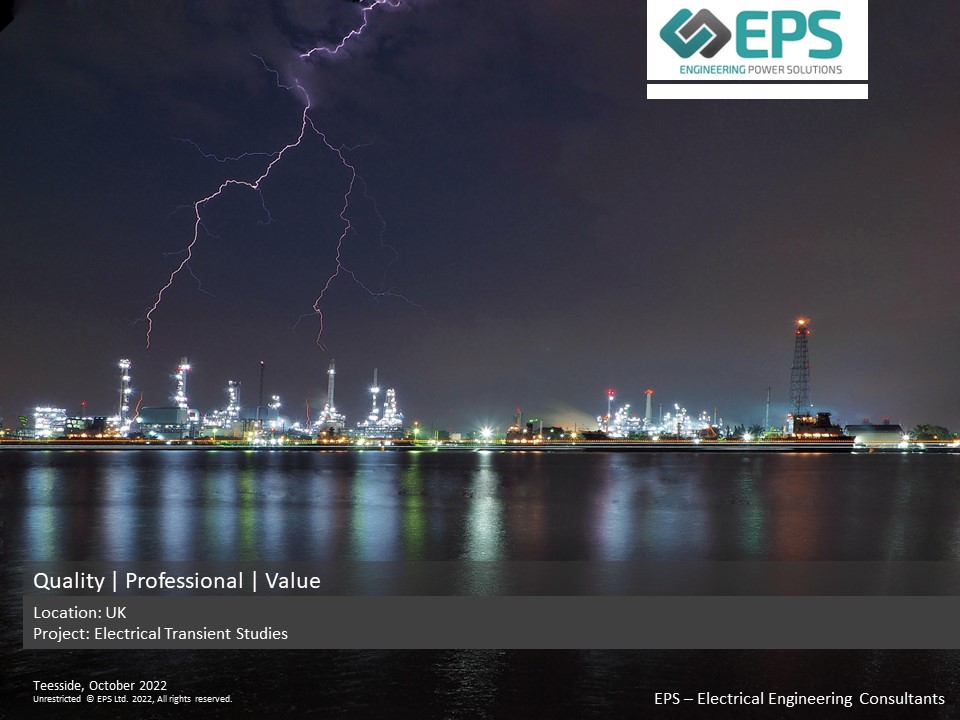When a switching action occurs in an electrical circuit, the current and voltage enter a transient state before settling into a steady state condition. Electrical transients, which occur immediately after the switching action, are short-lived but the consequences can be serious. In this article, we will consider the causes and effects of an electrical transient and the importance of effective surge protection.

What Is An Electrical Transient?
Electrical transients, or transient overvoltages, are incredibly short but powerful surges of electricity of up to 6,000V. Lasting for only a few millionths to a few thousandths of a second, they can wreak havoc on power systems, communications lines, or data centres. Due to flashover, an unprotected system may experience damage to cabling insulation while electric shock and fire can place personnel at risk of serious injury or death.
What Causes Transient Overvoltage?
Electrical transients can be caused by external or internal factors.
The most common cause of an external transient overvoltage is a lightning strike. Although highly localised, the impulse current flow ranges from 1,000 to 200,000 Ampere at its peak, with a rise time of only a few microseconds. A large impulsive transient overvoltage of this type can result in the total outage of an unprotected electrical system, with extensive damage to components.
However, hundreds of electrical transients occur internally in power systems every day because of switching operations of inductive loads (for example, transformers, lift motors, and air conditioning units) or the interruption of short circuit currents, such as blown fuses. Switching transients are less powerful than impulsive transients, such as lightning, but can inflict damage on electronic components over time and cause equipment failure in the long term.
What Are The Consequences Of A Transient Overvoltage On An Unprotected System?
The effects of impulsive and switched electrical transients are broadly similar on unprotected systems, including:
- RCD tripping
- Data loss
- Shorter equipment lifespan
- Serious damage to electronic components, including to essential services (security systems, fire alarms etc)
- Equipment downtime and repair expenses
- Lower productivity
The Benefits Of Transient Overvoltage Protection And Transient Analysis
Surge Protection Devices (SPDs) are the most effective way to protect sensitive or vulnerable electrical systems against transient overvoltages and are governed by BS EN/IEC 62305. Two types of SPD are relevant:
- For direct lightning strikes, circuitry should be protected with lightning current or equipotential bonding SPDs (Mains Type 1 SPDs).
- For indirect lightning strikes and switching transients, transient overvoltage SPDs should be used (Main Type 2 and Type 3 SPDs).
SPDs allow a transient which originated outside the electrical facility to be diverted at the service entrance, whereas internally generated transients should be diverted close to the source or to the electronic load.
A transient analysis – the analysis of the electrical circuit during the time taken to change from one steady state condition to another – will provide information about how the electrical currents and voltages adjust during the transient period. This facilitates a more incisive understanding of how power systems perform and determine power component ratings, the causes of equipment failure, and the effectiveness of Surge Protection Devices.
Contact EPS To Find Out More
At EPS, we are an ISO 9001 certified electrical engineering specialist with experience of providing bespoke transient overvoltage protection and transient analysis for vulnerable or high-risk installations.
To find out more about our services and ensure that your business is comprehensively protected against an electrical transient, please book a call with our in-house experts and we will be pleased to assist you.










